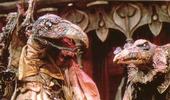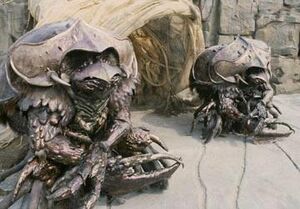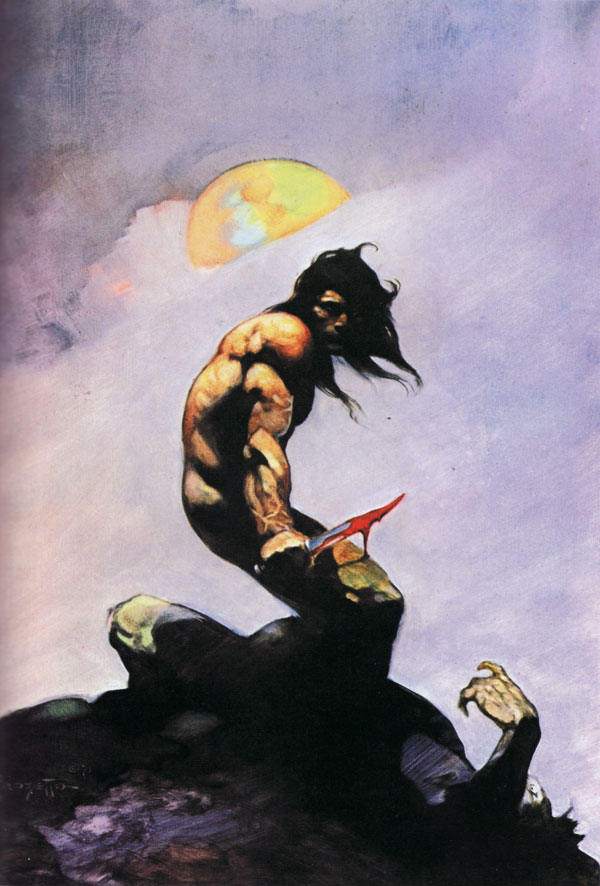Note this is Part of a series:
#1) Dark Muses I: The undercurrent of "Art" in Weird literature
#2: Dark Muses II: Creative Forces Driving Science and Art (you are here)
#3: Historical Anatomy: Composing Bodies and Representing the Invisible Soul
#4)
Weird, Dark Art Design: Implicit vs. Explicit Gore and Horror
__________________
Scientists and artists have long had inherent faith in their creative processes and the muses that motivate them. Scientists cannot a priori predict their theories for they begin only as mere hypotheses, like unadulterated marble blocks waiting to be carved. Likewise, art cannot be described genuinely before its creation. By testing hypotheses, theories emerge; by sculpting marble blocks, statues are birthed. Artists are guided by creative forces; ultimately, art (not the artist) must reveal and represent itself. As one works paint on a canvas, muses participate, the artist becoming an instrument and medium of sorts.
Although the Red Muse of
Lords of Dyscrasia is fictional, I do rely on real muses for inspiration. I generally subscribe to the philosophy of agnosticism, a term coined in 1869 by Thomas Henry Huxley who was an ardent supporter of his contemporary's theory of evolution (Charles Darwin's On the Origin of Species, 1859). In his primer book on science, Huxley expounded on nature's inherent sourcing of man's art:
Although this distinction between nature and art, between natural and artificial things, is very easily made and very convenient, it is needful top remember that, in the long run, we owe everything to nature; that even those artificial objects which we commonly say are made by men, are only natural objects shaped and moved by men; and that, in the sense of creating, that is to say of causing something to exist which did not exist in some other shape before, man can make nothing whatever...Carpenters, builders, shoemakers, and all other artisans and artists, are persons who have learned so much of the powers and properties of certain natural objects, and of the chain of causes and effects in nature, as enables them to shape and put together those natural objects, so as to be useful to man (Huxley 1888) i
The difference between artist and scientist was once more obscure than today. The processes of exploring the unknown via art or science are different but the methodologies share the same motivating source and subject. For me, scientific and artistic muses connect the naturally divine to the artificially materialistic; practicing creative processes brings comfort, satisfaction, and revelation of life's mysteries; following creative muses is enlightening. Along these lines, I have long been a resolute agnostic, refusing to arbitrarily ascribe a name, face, or religion to all that is incomprehensible (read god), but as scientist and artist, I do have a faith using creative processes to connect with the ineffable.
The creative Muse assumed an essential role in
Lords of Dyscrasia, albeit a broader inspiration than that revealed in Greek mythology; as the Muse's primary curator, Grave does echo the role of Hephaestus the smith and Endenken Lysis assumes the role of Prometheus, antagonizing the gods and procuring their fire; and Maeve is not unlike Pandora, a beautiful harbinger of pain and pawn of the gods, crafted out of earthly elements by the smith Hephaestus. So it is appropriate to investigate the inspiration behind the gothic classic The Modern Prometheus (1818) in which Mary Bryce Shelly, guided by muses, grappled with the themes of Science, Art, and Spirit. Her character Victor Frankenstein, the infamous artist and scientist, pieced together materials from cemeteries to create life via alchemy. In her prologue, she described how her muse worked though her:

My imagination, unbidden, possessed and guided me, gifting the successive images that arose in my mind with a vividness far beyond the usual bounds of reverie. I saw-with shut eyes, but acute mental vision-I saw the pale student of unhallowed arts kneeling beside the thing he had put together. I saw the hideous phantasm of a man stretched out, and then, on the working of some powerful engine, show signs of life, and stir with an uneasy, half-vital motion. Frightful must it be; for supremely frightful would be the effect of any human endeavor to mock the stupendous mechanism of the Creator of the world. His success would terrify the artist...ii
In a correspondence to his friend and contemporary author, Clark Ashton Smith, Robert Ervin Howard (1906-1936) explained his interaction with the muse that inspired his Conan yarns. Howard is often credited with being the originator of today's Sword & Sorcery genre with his characters: Conan the Barbarian, King Kull, Solomon Kane, and Bran Mak Morn. In December 1933, Howard wrote to Smith about his Conan muse:
'While I don't go so far as to believe that stories are inspired by actually existing spirits or powers, though I am rather opposed to flatly denying anything, I have sometimes wondered if it were possible that unrecognized forces of the past or present--or even the future--work through the thought and actions of living men.
'This occurred to me when I was writing the first stories of the Conan series especially. I know that for months I had been absolutely barren of ideas, completely unable to work up anything sellable. Then the man Conan seemed to grow up in my mind without much labor on my part and immediately a stream of stories flowed off my pen--or rather off my typewriter--almost without effort on my part. I did not seem to be creating, but rather relating events that had occurred. Episode crowded upon episode so fast that I could scarcely keep up with them.
'For weeks I did nothing but write of the adventures of Conan. The character took complete possession of my mind and crowded out everything else in the way of story-writing. When I deliberately tried to write something else, I couldn't do it.
'I do not attempt to explain this by esoteric or occult means, but the facts remain. I still write of Conan more powerfully and with more understanding than any of my other characters. But the time will probably come when I will suddenly find myself unable to write convincingly of him at all. This has happened in the past with nearly all my rather numerous characters; suddenly I find myself out of contact with the conception, as if the man himself had been standing at my shoulder directing my efforts, and had suddenly turned and gone away, leaving me to search for another character.' iii
So where do muses lead us? In fairy tales, the
ignis fatuous (a.k.a. will-o'-the-wisp, fool's fire, jack-o-lantern, or corpse candle) is a luminous, nondescript light that hovers over wetlands and obscures forest paths. These lights are thought to trick people into hellish traps or endless, foolish journeys. In
Lords of Dyscrasia, I liken the role of the
ignis fatuous to that of fiery muses rather than evil temptations. I acknowledge a longstanding fascination with Lloyd Alexander's Chronicles of Prydian and his deathless, zombie soldiers the Cauldron Born who served Arawn Death-Lord. The Cauldron Born zombies were based from the magical Cauldron of Arawn mentioned within the Welsh medieval manuscripts the Mabinogion; therein, fallen soldiers could be cast into the pot to be fully rejuvenated.
The idea of cooking with souls and men, giving life back to the dead (whether fully sentient or zombie like) builds on the themes of alchemy and the link between body, soul. This recipe for resurrection transmutes the soul from the unreachable chaos back into earthly elements. For
Lords of Dyscrasia, the Forge assumed the role of a magical cauldron but with a more direct link to artistry; the notion that the magical fire responsible for the forge's power may be a mobile fire was very exciting to me; a dead man could be placed into a forge, be rejuvenated by its fire, and then leave the vessel an undead man with the magical fire still burning him! This symbolism has roots in mysticism, as the divine fifth element as been described as an astral fire, with roots in alchemy; here Alexander Roob summarizes this in his Alchemy and Mysticism:
It is said of the philosopher and thaumaturge Empedocles that he claimed the existence of two suns. The hermetic doctrines also include a double sun, and distinguish between a bright spirit-sun, the philosophical gold, and the dark natural sun, corresponding to material gold. The former consists of the essential fire that is conjoined with the ether of the 'glowing air'. The idea of the vivifying fire - Heraclitus (6th century B.C.) calls it 'artistic' fire running through all things - is a legacy of Persian magic. Its invisible effect supposedly distinguishes the Work of the alchemists from that of the profane chemists. The natural sun, however, consists of the known, consuming fire, whose precisely dosed use also determines the success of the enterprise.iv
i Huxley, T. H. (1888). Introductory, Science Primers. New York, D. Appleton and Company. p8-9
ii Shelley, M., Ed (1993). Frankenstein 1818 Text. Oxford World's Classics. New York, N.Y., Oxford University Press.
iii Lord, G. (1976). The Last Celt: A Bio-Bibliography of Robert Ervin Howard. Hampton Falls, NH, Donald M. Grant Publisher, Inc., p57
iv Roob, A. (2006). Alchemy & Mysticism. Los Angeles, C.A., Taschen Press. p25































